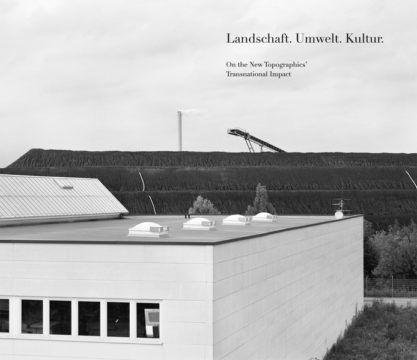In 1975 the exhibition New Topographics – Photographs of a Man-altered Landscape in the George Eastman House in Rochester (USA) provided new impetus for contemporary photography. Using the keyword “topographic”, the curator William Jenkins characterized the objective-neutral, detached approach of the photographers whom he had selected as their overriding style in which the photographers – with an interest in urban architecture – made the increasing dichotomy of “nature” and “culture” in the American suburbs into the subject-matter of their focus. An environmental or even environmentally critical point of view was not in fact a central theme in the New Topographics Exhibition, although the works of the New Topographics are very much in the context of the everywhere emerging environmental consciousness of the 1970s. So this consciousness inspired the orientation of later works more directly, such as Lewis Baltz’s San Quentin Point from 1982, but also John Gossage’s The Pond from 1985 (Gossage was not represented in Jenkins’ show).
Today the New Topographics is adjudged to have a greater influence on international art photography after 1975 and the exhibition is often even understood in the sense of a movement. At the same time, or soon afterwards, a blossoming of photographic ways of presentation of culture and landscape can be observed in many western countries which are close to the keyword of “topographic” as being a presumably neutral stocktaking of the landscape. The New Topographics can be seen, in particular, as the crucial idea provider for the program of the Mission photographique de la DATAR with which a French planning authority from 1984 to 1988 had commissioned twenty-nine photographers to produce artistic interpretations of the structural transformation of rural France; the exhibition was also a source of ideas for the Dutch landscape photography of the 1990s which often resulted from state commissions.
How, however, did the New Topographics Exhibition function as a catalyst for a transnational photographic interest in the effects of man-made changes to nature? In what way does a multitude of current works, with the themes of wastelands, edge lands or terrain vagues, hark back to the New Topographics? What common characteristics can be discerned in the imagery of the countries, and what national differences and special features can be recognized in “topographic” landscape depictions from the USA, France, Germany, England, Spain, Denmark and the Netherlands?
The Braunschweig exhibition project »Landschaft. Umwelt. Kultur. – On the New Topographics’ Transnational Impact« examines the global influence of the New Topographics through artistic perspectives from six countries. The exhibition project carries out a comparison of the photographs and in so doing asks about content similarities but also about differences in direction and visual conception. In addition, it presents contemporary environmentally critical representations, which in fact have reference to the New Topographics but, after forty years of intensive photographic treatment as well as in view of the intensification of the global climate change in the age of the Anthropocene, do adopt a more direct ecological perspective.
- Veröffentlicht am Donnerstag 22. Oktober 2015 von Museum für Photographie Braunschweig
- ISBN: 9783981756814
- 144 Seiten
- Genre: Hardcover, Kunst, Softcover
